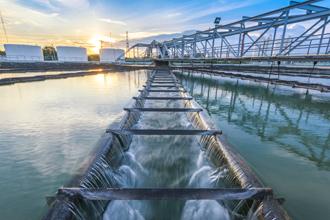Climate Adaptation and Water Utility Operations

Climate change threatens water utility infrastructure through increased storms and flooding. Coastal water utilities may also be at risk of flooding from sea-level rise and storm surge. Climate change can also complicate operational capabilities of water infrastructure through more frequent and intense drought events and storms, salt water intrusion, and impacts on source water quality.
Water utility infrastructure may be vulnerable to more frequent and intense storms and sea level rise. Storms can cause flooding and storm surges that can overwhelm or damage infrastructure. Sea-level rise may worsen storm surges and threaten to inundate infrastructure over time. Climate changes, such as sea-level rise, may also complicate the operational capabilities of water utilities.
Climate changes, such as drought, sea level rise and saltwater intrusion may threaten source water quality and complication water utility operations. Storms, anticipated to become more frequent and intense due to climate change, can lead to greater pollutant runoff and adversely affect the quality of source water. Conversely, drought can negatively affect the quality and availability of source water and concentrate existing pollutants. Sea-level rise can also threaten water utility operations through contributing to salt water intrusion of coastal surface and ground water.
